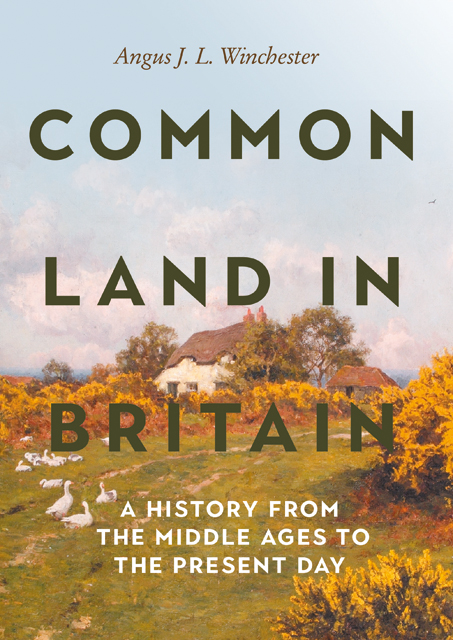Chapter 8 - The Changing Face of Common Land Since 1860
Published online by Cambridge University Press: 20 December 2022
Summary
Common land is only ‘half-wild’ – hardly anywhere in Britain is ecology untouched by mankind. Typical landscapes of common land, such as moorlands and heaths, are the product of interactions between natural and human forces; they are potentially unstable and subject to change in response to variations in either. This chapter offers an overview of how the face of common land has changed since the mid-nineteenth century, looking at the relationship between evolving patterns of use and the ecological character of those commons which survived the age of enclosure. Key factors include changes in grazing pressure, the cessation of some traditional uses, notably the gathering of fuel, and, increasingly, the role of government agencies in steering management practices for conservation ends. In broad terms, economic and technological change across the twentieth century led to a divergence between actively used upland commons and abandoned lowland commons. Upland commons generally experienced an intensification of use, whether increased grazing pressure or active management as grouse moors, whereas grazing and fuel gathering ceased on many, but not all, lowland commons. Meanwhile, common land near towns tended to be brought into the service of modern urban populations, and ‘municipalised’ into recreational parkland. These three distinct trajectories of change since the 1860s are examined in turn.
One theme which recurs is the increasing role played by the state in pursuing conservation objectives, resulting in the active manipulation of the ecology of common land, both upland and lowland, from the later twentieth century. Central to this has been the language of ‘favourable’ and ‘unfavourable’ condition used to judge the ecological state of Sites of Special Scientific Interest (SSSIs). Since 57 per cent of common land in England is in SSSIs, the impact of such thinking has been significant. Owners and occupiers of SSSIs are required to seek consent from state conservation bodies (now Natural England, Natural Resources Wales and NatureScot) for activities which might damage the ecology (such as peat-digging), and consent can be refused. Financial incentives have been introduced in the form of management agreements fostering the aims of nature conservation. Even where common land is not notified as SSSI, a succession of agri-environment agreements since the 1990s, whereby state funding is used to direct land use (often by paying farmers to reduce stocking levels), has had a major impact on the exercise of common rights.
- Type
- Chapter
- Information
- Common Land in BritainA History from the Middle Ages to the Present Day, pp. 183 - 204Publisher: Boydell & BrewerPrint publication year: 2022



